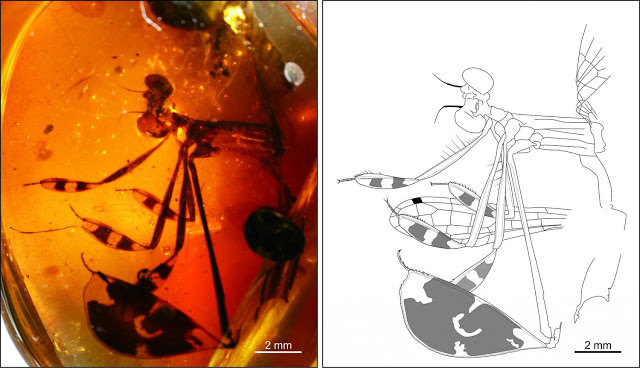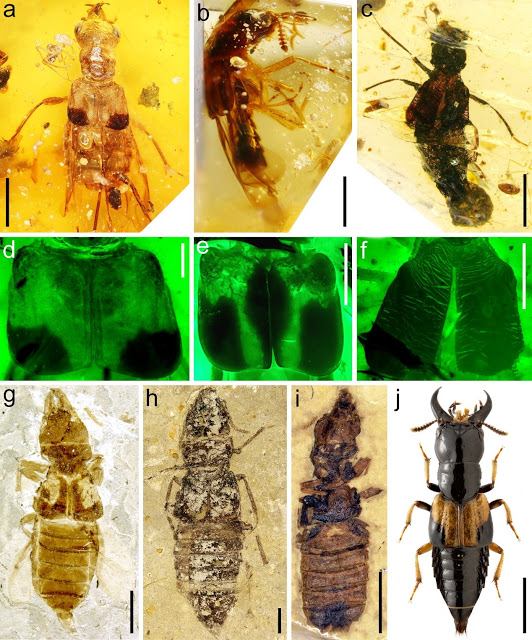At https://phys.org/print409396981.html … Cambridge University and the Natural History Museum in London have published new research which seems to show there is a need to change the family tree of dinosaur evolution.
At https://archaeologynewsnetwork.blogspot.co.uk/2017/03/courtship-behaviou… … courtship behaviour trapped in amber.It involves three damselflies in the posture of display before a female – but died without getting lucky. How sudden was that?

At https://archaeologynewsnetwork.blogspot.co.uk/2017/03/microorganisms-in-… … researchers at Aarhus University in Denmark have sequenced the genome of some micro-organisms inhabiting the subsurface of the sea bed. In other words, micro-organism living under the sea bed floor. The results reveal the extreme evolutionary regime controlling microbial life in the deep biosphere.
Another oddity in amber. At https://archaeologynewsnetwork.blogspot.co.uk/2017/03/intact-mushroom-an… … mushrooms are ephemeral and rarely appear as fossils. However, they are known from amber. The earliest mushrooms date back to the Mesozoic 90 million + years ago. Mushrooms were growing when dinosaurs walked the earth. Rove beetles also occur in amber … see below
 … the rove beetle is adapted to feed on mushrooms.
… the rove beetle is adapted to feed on mushrooms.
At http://www.everythingselectric.com/preserved/ … we have dinosaur tracks preserved in New Zealand. They were made in beach sand – but preserved rapidly (quickly covered in mud and silt and preserved from tides).
At http://www.everythingselectric.com/fossilization-1/ … even palaeontologists are talking about fossilisation within a single day. The fossil bed is in Argentina and includes fungi, cyanobacteria, and worms (dating back to the Jurassic).
At http://www.everythingselectric.com/physalis-infinemundi/ .. lantern fruit instantly fossilised and turned into coal. The fossil comes from Patagonia.
At http://www.everythingselectric.com/happisburgh-footprints/ … Happisburgh is best known for cliff falls revealing ancient forests etc. In this post we have footprints preserved from 800,000 years ago. They survived as they were made in waterlogged clay and silts and gravels that was buried very quickly. There was also a stunning array of plants, mammals and insects, the sediment covered in beach sand until tides displaced the covering and revealed what was underneath.
